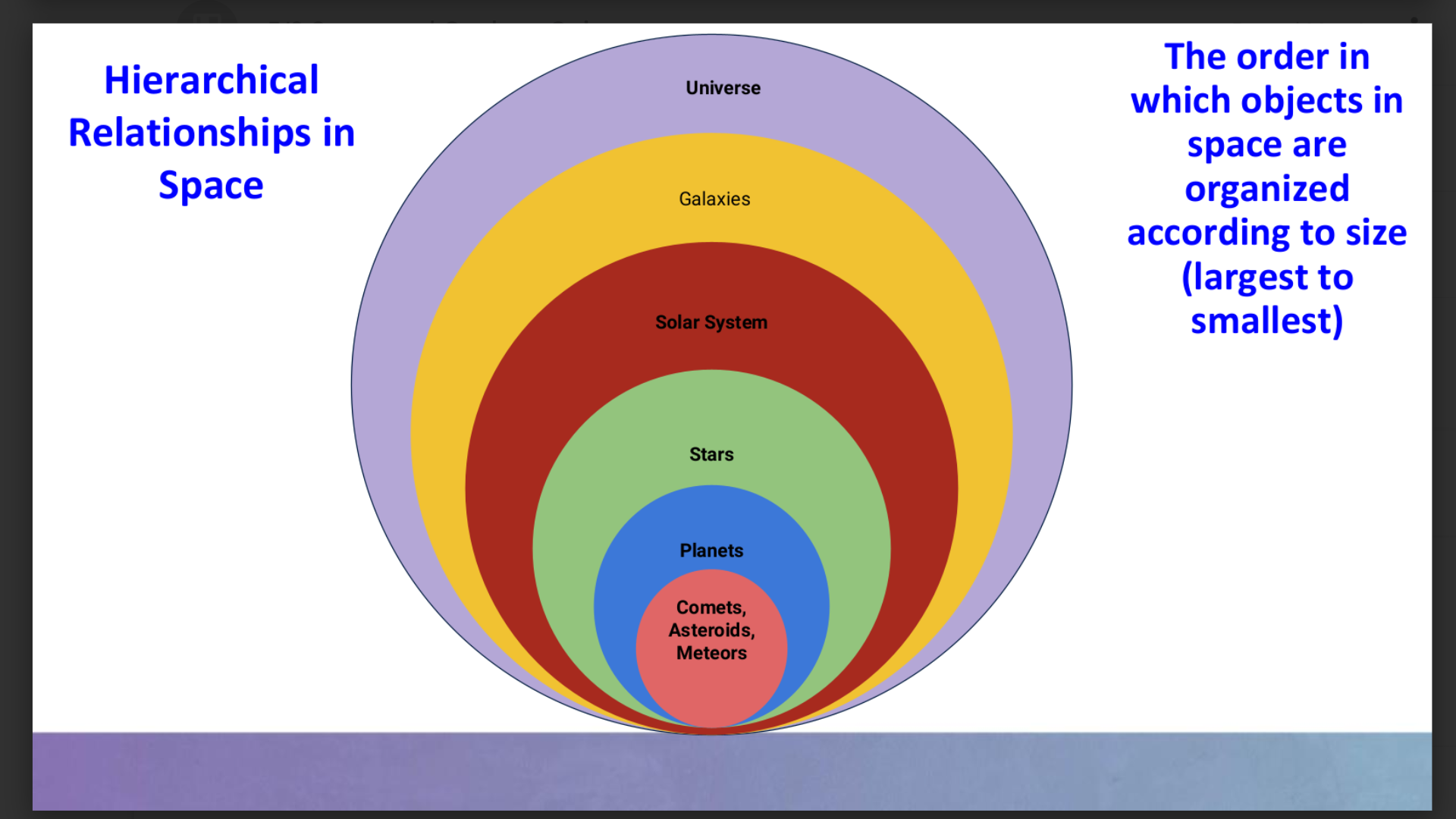Geology, Continental Drift, and Earth/Space Science
Geology and Continental Drift
Crust
● The part we live on.
● Broken into many plates
that “float” on the mantle.
Lithosphere
● The crust and upper
mantle make up this zone
of brittle rock.
Mantle
● The largest layer that is
composed of very hot,
dense rock.
● The reason the plates
moves (convection
currents)
Outer Core and Inner Core
● Composed of liquid metals
with extreme heat and
pressure
Plate Tectonic Theory
• Earth’s crust is broken into pieces called plates
• These plates are part of the lithosphere and “float”
on the mantle.
• Movement results in volcanic eruptions, mountain
building, earthquakes and ocean basins.
3 Different Ways the Plates Move
● Convergent - moves together
● Divergent - moves away
● Transform - slides past
Convergent Boundary
Plates move towards
each other
(collide)
A continental plate collides with a oceanic plate
● Subduction occurs
● Trenches form
● Volcanoes form
● Strong Earthquakes
Two continental plates collide
● Mountains form
Divergent Boundary
Plates move away
from each other
(pull apart)
Oceanic plates move apart
● The lithosphere lifts and produces a mid-
ocean ridge.
● The crack allows magma to rise, cool and
become new crust.
Continental plates move apart
● A rift is created
● Earthquakes can occur
● New ocean basin can form due
to sinking of the mid plate
Transform Boundary
● Earthquakes are created from stress released
when the plates slide along each other.
● Fault line is where the plates slide past each
other.
● Crust is neither created nor destroyed.
Earth/Space Science
What evidence do we have that Earth has evolved over time?
● Natural processes such as weathering, erosion, and plate tectonics
have reshaped Earth’s surface. The distribution of land and water
on Earth’s surface has changed over time.
● Geologists use the following methods to determine the age of
Earth:
○ Fossils
○ Relative and Absolute Dating
○ Earth’s Surface Features
○ Radioactive Dating
○ Geologic Time Scale
Relative dating
● Examines if one layer
of rock is older than
another.
● It is approximate
Absolute Dating
Uses radioactive material in igneous and metamorphic rock to determine the age of rocks in years.
Law of Superposition
● oldest layers are on
the bottom and as
you move towards
the surface the
rocks are younger.
Fossils are
● preserved remains of living things
● most often found in sedimentary rock
They provide evidence
● about the history of life and past environments
on Earth.
● how different groups of organisms have changed
over time.
The Geologic Time Scale
● a calendar created by scientists for
“events” in Earth’s history
● divided into different units of time
● fossils that form in the layers or strata of
rock is the way that they establish this
time scale.
Radioactive Dating
Scientists use Radioactive Dating to determine age of rocks.
● Radioactive elements decay or breakdown in rock (igneous or metamorphic) and become unstable.
● The quantity of unstable atoms in the rock is measured and compared to quantity of stable atoms still in the rock to estimate the amount of time that has passed since the rock formed.
These is how the age of rock in years is determined for Absolute Dating

Hierarchical Relationships in Space
The order in which objects in space are organized according to size (largest to smallest)
Universe, Galaxies, Solar System, Stars, Planets, and Comets, Asteroids, and Meteors.
Universe
The universe is space and all the matter and energy in it.
Throughout the universe, there are areas where galaxies are
densely concentrated.
These areas are called clusters and superclusters.
The universe also contains huge spherical areas where very
little matter exists.
They are called voids.
Galaxy
Galaxies are large scale groups of stars that are bound
together by gravity.
Size of a typical galaxy is 100,000 light years in diameter.
Roughly 100 billion stars are contained within a galaxy.
** Galaxies are moving away from each other as space
expands
Solar System
The solar system is the collection of large and small
bodies that orbit a central star.
Altogether, there can be up to a trillion small bodies
in a solar system.
Stars
A star is a large celestial body that is composed of
gas and emits light.
Most stars are composed almost entirely of
hydrogen and helium.
Planets
A planet is a spherical body that orbits a
star.
The sun is our central star in our solar system
Comets, Meteors, Asteroids
Asteroids and Comets are large fragments that orbit the sun.
Meteors are known as a “shooting star”
Asteroids = rocky
Comets = mix of frozen gases, water, and dust particles
Meteors = made of rock and metal
Asteroids are mostly located in Asteroid Belt between Mars and
Jupiter
Comets sometimes return; others have a single revolution.
Distances in Space
An astronomical unit (AU) measures the
average distance between the Sun and
another object in the solar system. It is used
only when you measure distances within the
solar system.
A light-year is the distance light travels in
one year, hence the name "light-year". It is
used to measure the distances between
galaxies and stars.